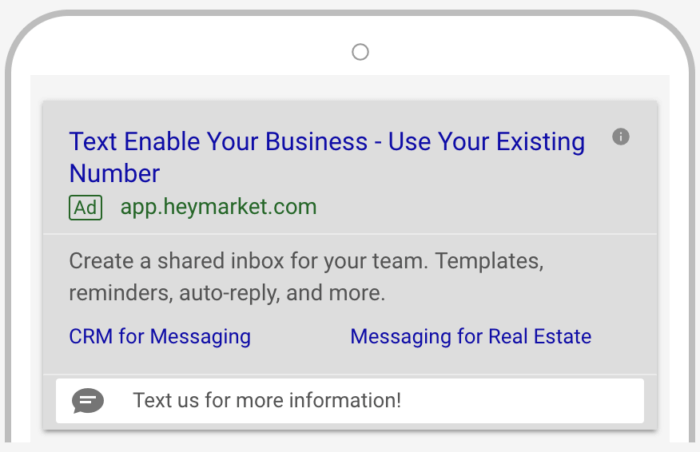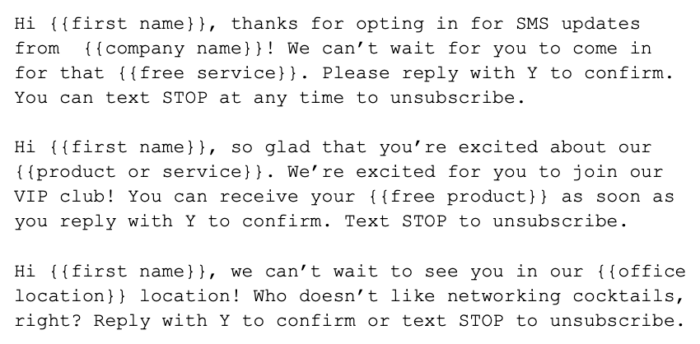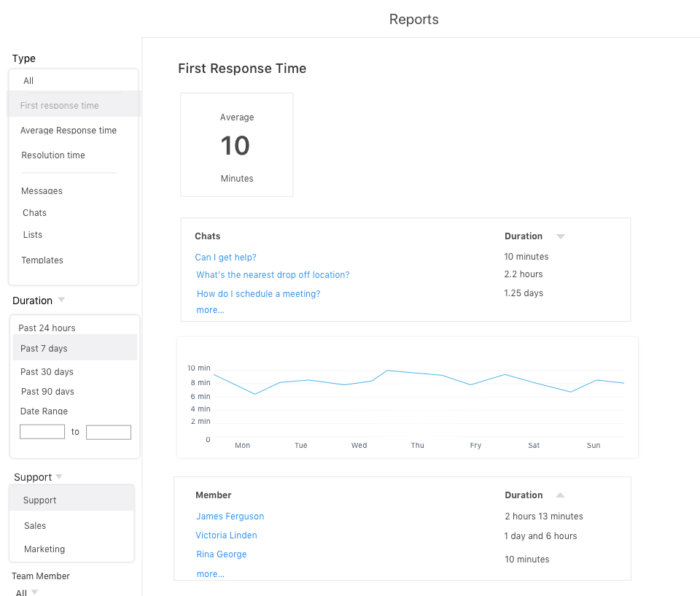Businesses have begun using advanced business texting tools to send messages through channels like SMS and Facebook Messenger, ultimately bridging the gap between getting leads and engaging with them.
It has become increasingly easy to acquire leads through online marketing channels, particularly social media channels like Facebook and SEM channels like AdWords.
Facebook is an especially good example of a business-friendly e-marketing channel. Some 78% of American consumers have discovered retail products to buy on Facebook and the average Facebook user clicks on eight ads per month.
Download our Individual Member Resource – B2C marketing automation best practices guide
This guide to marketing automation best practices for consumer markets will help you review your requirements for marketing automation, select the best vendor and create or review your lead generation and nurturing programme.
Access the
Google Ads is another example of a trusty e-marketing tool for both businesses and consumers. Three-fourths of people (75%) say paid search ads make it easier to find the information they are searching for on a website or search engine and about four times as many people are more likely to click on a paid search ad on Google (63%) than an ad on any other search engine.
But while businesses have learned how to use e-marketing to get leads, most are still struggling to earn conversions. Only around 22% of businesses are satisfied with their conversion rates. This problem stems from the difficulty to engage leads, especially over time. Those businesses that do engage and nurture leads make 50% more sales at a cost that is 33% less than non-nurtured prospects.
Text messaging, which an astonishing 97% of Americans use daily, is one answer to this continuing problem of engagement. Fortune 100 and small businesses have begun using advanced business texting tools to send messages through channels like SMS and Facebook Messenger, ultimately bridging the gap between getting leads and engaging with them.
From what we’ve seen with the businesses we work with, the process of successfully engaging leads from e-marketing to SMS is a simple, five-step process. Most recently, a marketing agency that works with a nationwide fitness brand used it to increase new lead revenue for each of their locations.
Step 1: Get granular with online lead acquisition.
Whether you decide to run a Facebook Leads, Google Ads, or email marketing campaigns, choosing which audiences to target is a key step that will affect the success of your campaign and subsequent outreach attempts.
The more customized your campaigns are for each user segment, the more likely they will appeal to customers and entice them into clicking. For example, segmented emails earn 100.95% more clicks than non-segmented emails. Later on, targeted lead lists will empower you to send relevant messages to opted-in recipients.
When creating your campaign, ensure you:
Get granular with targeting
Most e-marketing channels like email allow you to segment lists easily. Channels like Facebook and Ads will have pre-created audiences you can choose from. You can target people by their location, education, profession, industry, and title, among others. You can even retarget people who have provided their email addresses.
While you don’t want to choose an extremely narrow audience, an extremely wide audience is equally ineffective. We often see businesses use “Opt-In” as one custom field for segmenting users who want to receive SMS communications. After that, we see businesses segment users by product type, type of opt-in (e.g., web form, SMS, in-person), last order date, location of opt-in (e.g., Los Angeles event, New York event), and local store. Be sure to strategize which audience will produce high-quality leads.
Adjust content based on audience
Don’t neglect your content, either. If you decide to split your campaign, targeting two or more distinct lists, adjust the content that you send to each group. This could mean making your images more appealing to one group or adjusting the copy on your post. If the content seems tailored directly to your recipients, they’ll be more likely to click on it.
Ask for the necessary opt-ins right away
In order to send texts to your leads, you’ll need to have them opt in to comply with regulations such the TCPA and GDPR. Either offer opt-in instructions immediately upon their click (in a checkbox or a form) or include your short SMS opt-in instructions on the ad itself. An opt-in can be integrated into a Facebook Lead ad or into a Google Ads campaign using the SMS feature. If including opt-in instructions on the ad itself, try wording like:

Simplify the opt-in process
The opt-in process can be simple. For example, with SMS, users can simply text in with a keyword, like “SMS update,” or click on a link that redirects them to a website or form where they check a box to opt-in. At a minimum, you should send a confirmation message upon the initial opt-in.
We recommend a double opt-in just to confirm that you have each customers’ permission to text them. For example, after the initial opt-in (e.g., a checkbox on a web form, customer texts in), send the customer a text reading:

Step 2: Integrate your leads into a business text messaging platform
Once you have your lists of earned leads from an e-marketing campaign, it’s time to engage with your list from a business text messaging platform. Why, for social media, SEM, or email leads, would you import lists into a text messaging platform? Most of today’s advanced business SMS platforms can receive and send messages with a wide variety of messaging apps as well as SMS.

To simplify the process of reaching out to leads when importing:
Segment leads into lists
After your campaign is complete, ensure you keep leads separated into their unique lists; don’t combine them into a single list. These granular lists of leads can be imported into your business text messaging platform so that you can tailor subsequent messages to them as well.
Don’t forget custom fields
It takes a little more work up front, but adding custom fields to your leads will pay you back tenfold once you start sending messages (I’ll explain later). The more detailed the information you include, the better. Customer field options can include appointment date, office address, past purchases, and anything relevant to your business and customers.
Choose a platform that lets you automate this process
At the very least, your SMS platform should allow you to quickly upload CSV files with all of your lead information. Ideally, your business texting platform will be able to integrate with your e-marketing channels, like Facebook, Google Ads and email, or at least any of your CRM systems, so that the SMS platform will automatically update it with new lead information.
Step 3: Engage leads soon after acquiring leads, and engage them often
Engaging leads over SMS should be a priority of any campaign. In fact, you don't want to wait until your entire marketing campaign is complete to start engaging leads, especially if your campaign will be running on an ongoing basis. After all, a study revealed that businesses who attempted to reach leads within an hour were nearly seven times more likely to qualify their leads than those who waited 60 minutes. If your recipient has your content top of mind, they are more likely to respond positively to your targeted, personalized message.
When strategizing about your message, be sure to:
Automate the entire process
Your business texting platform should allow you to create a single template for each targeted list. Then, the platform should be able to dynamically insert your leads’ custom field information into each SMS when it sends so that with a single click, you can send a personalized message to each recipient. If your business texting platform has full automation capabilities, it should be able to automatically trigger a sequence of messages each time it imports a new earned lead from your campaign.
Don’t forget to personalize your templates
Creating the templated messages that will be sent for each campaign is a key part of the process. Each template should include ample personalization merge tokens, such as:

Be polite
As everyone knows, receiving too many unsolicited messages from a business - no matter how much we love it - can be tiresome. When you plan your lead engagement strategy, ensure you send messages during work hours and with the signature of an employee, so recipients know they’re texting with a human and not a bot.
Step 4: Track with reports
Like 66% of data-driven marketers do already, you’ll need to track the results of your engagement campaign with reports so you can make improvements to your e-marketing campaign or future e-marketing campaigns. Luckily, most business texting platforms allow you to easily monitor messaging campaign results with built-in and exportable reports.

When planning how to approach your reports, be sure to:
Choose your KPIs
Your key performance indicators (KPIs) should line up with your e-marketing campaign objective. If you’d simply like to grow your audience, measure list growth rates and customer opt-out rates. If you’d like to increase consumer engagement, measure response rates. If you want to ensure your SMS interactions are valuable, measure opt-out rates - the more valuable the interactions, the lower the customer unsubscription rate.
Most businesses will create a custom field for each contact to track a conversion (e.g., “scheduled appointment”). As an employee messages with a lead and reaches a conversion, they can quickly mark that custom field (which, in turn, can be synced to your CRM). Common KPIs for post-campaign messaging include customer subscription rate, customer unsubscription rate, list growth rate, customer response rate, and conversion rate.
Look for insights from your data
While measuring your KPIs is a great first step, you’ll want to look for specific insights, too. A common best practice is to export the data from all sent and received messages alongside your earned leads, then track how often certain keywords are used by the leads. You can even export that data and put it into Tableau or another simple tag cloud product to visualize qualitative trends.
Tweak your campaign
Once you discover your valuable insights, adjust either your marketing campaign or your messaging campaign. Change one campaign aspect at a time, so you can determine whether the change had an effect on your results. If you adjust multiple things at once, you will not be able to tell which item induced the change.
STEP 5: Iterate
After you have reviewed your business text messaging report and made subsequent adjustments, it’s time to return to the beginning of the process. But before you begin again, don’t forget to:
- Make changes to either your messaging campaign or your e-marketing campaign based on your reports.
- Check for additional messaging automation that you might have been wary of using (or just plain forgot) the first time around.
- Streamline any parts of the process that seemed clunky or time-consuming; often, if you work with your business SMS platform team directly, they will have immediate suggestions based on their learned best practices.
Once you’ve completed each of these final checks, it’s back to the drawing board for an even more successful campaign run.
Overview
While e-marketing is a great resource for leads, businesses often find themselves wondering how to engage leads and increase conversion rates. After years of experience working with Fortune 1000 and smaller business, I’ve found that the bridge between e-marketing campaigns and lead engagement lies in mastering targeted and fast business text messaging.
Amit Kulkarni is the co-founder of
Heymarket, an advanced business text messaging platform. Along with the Heymarket team, Kulkarni has years of experience crafting intuitive and secure solutions for enterprises and tens of thousands of small businesses. He and the Heymarket team have worked closely to integrate solutions with industry-leading APIs from companies like Salesforce, Google, Facebook, Apple, Zendesk, and Twilio. Prior to creating Heymarket, the team developed Manymoon, the top app in the G Suite Marketplace, which was acquired by Salesforce in 2011.











